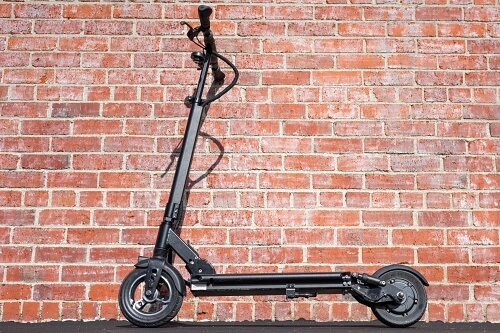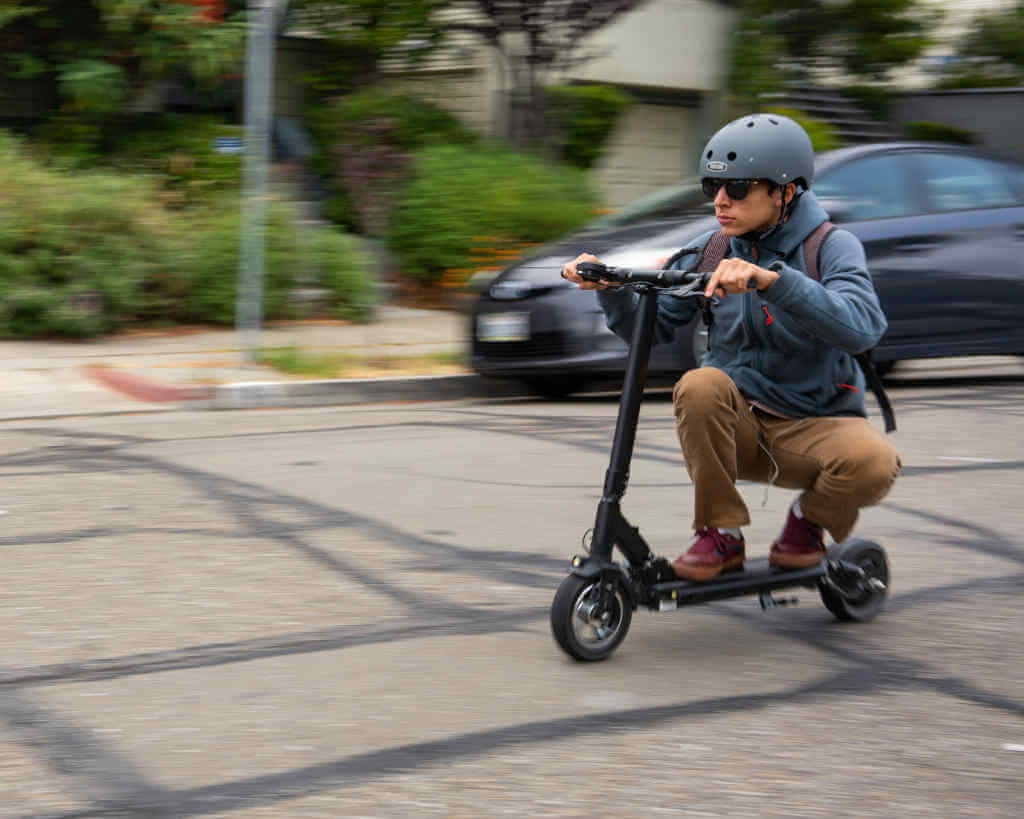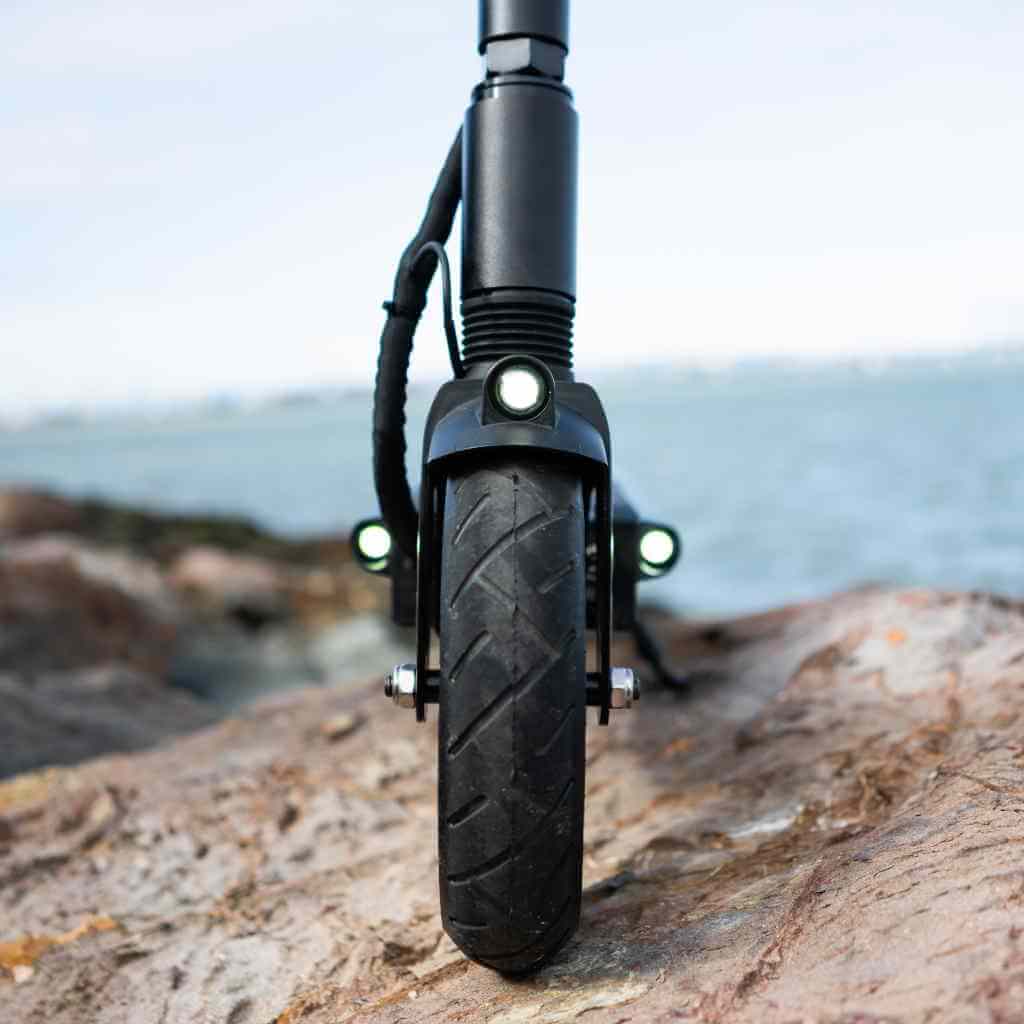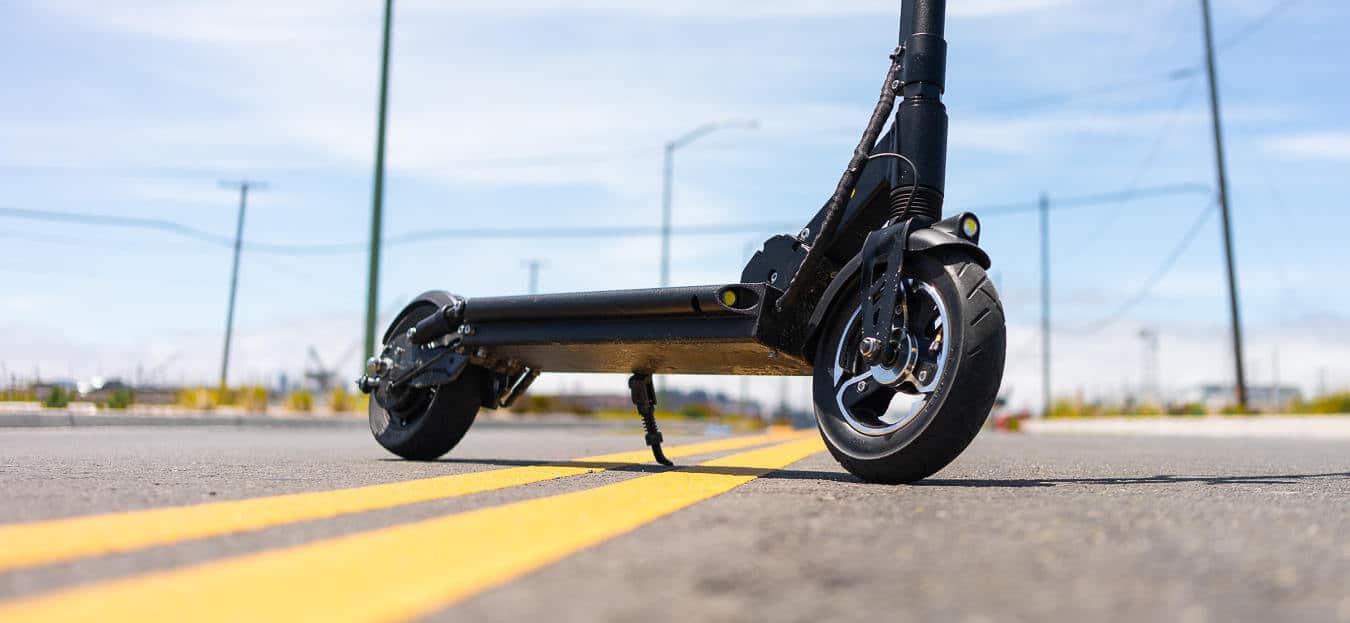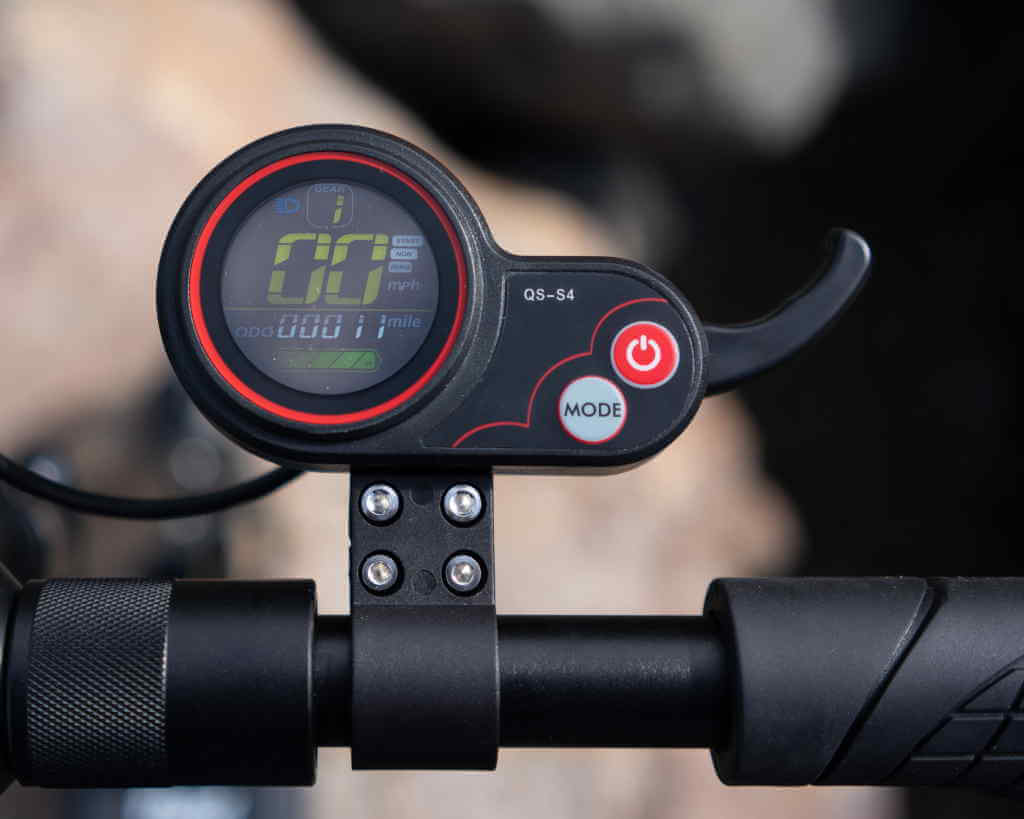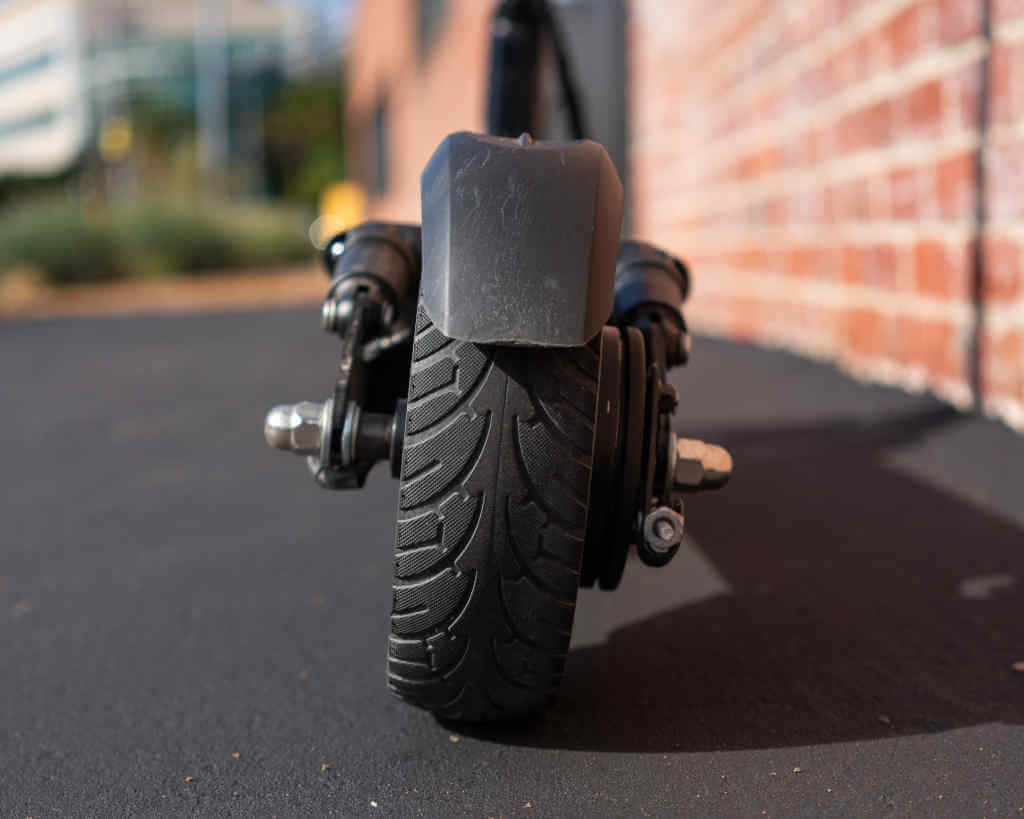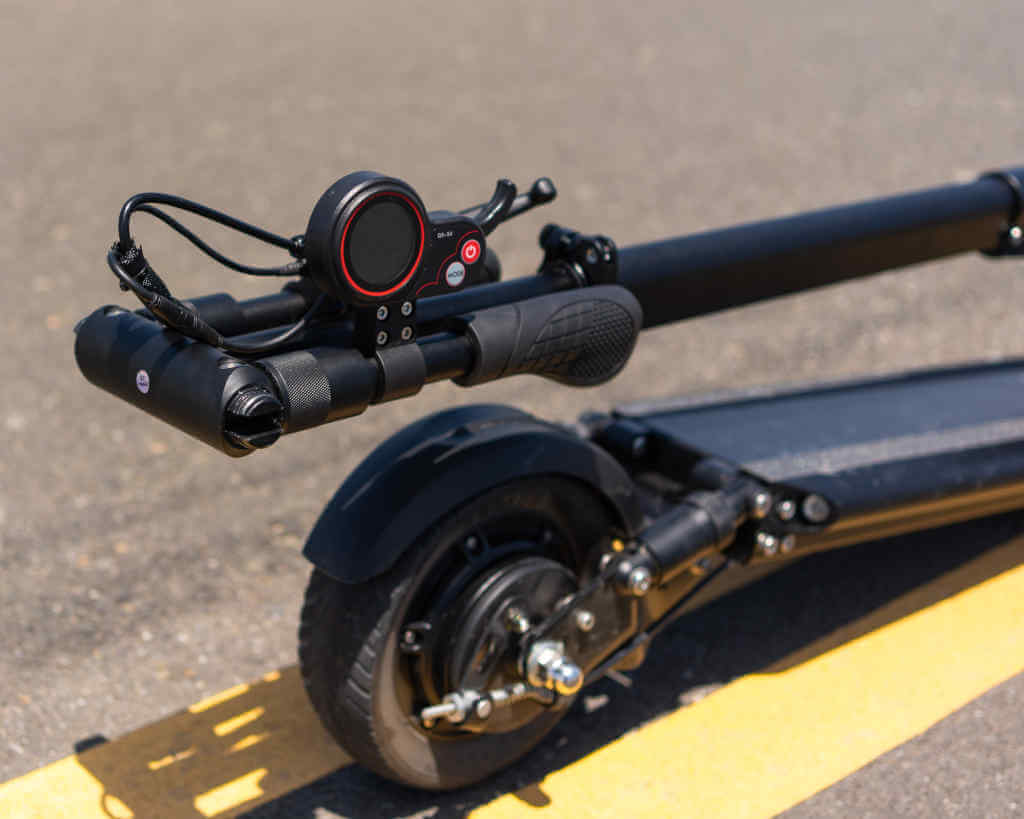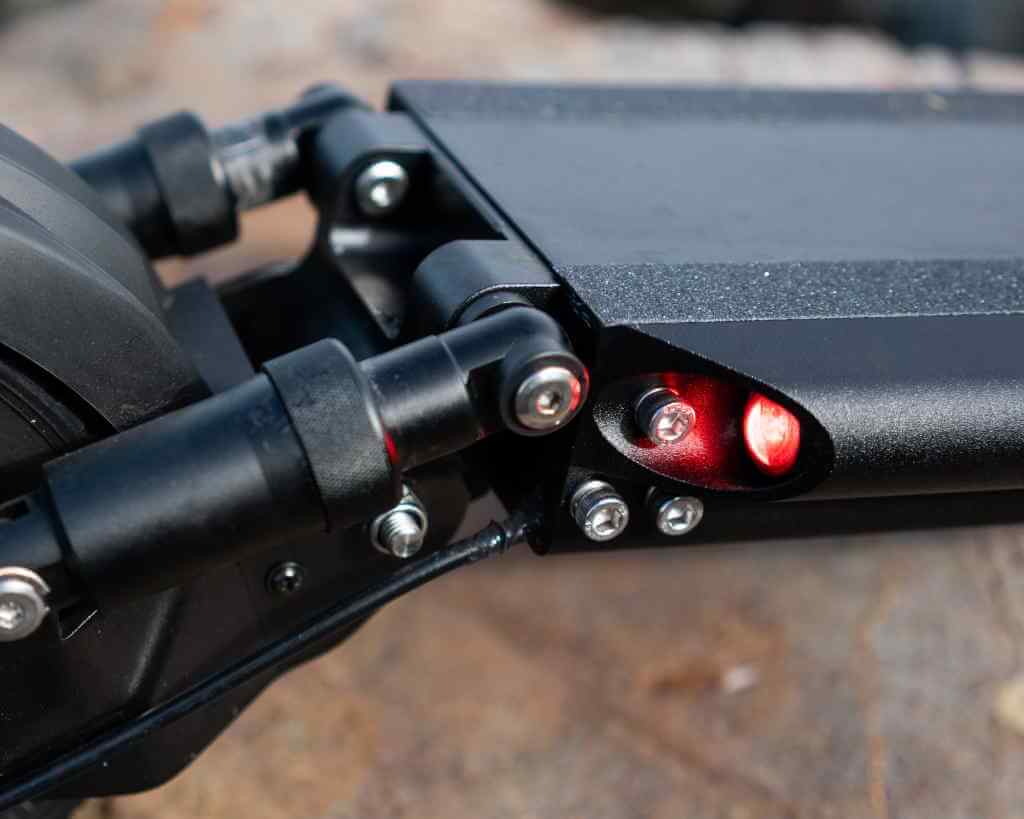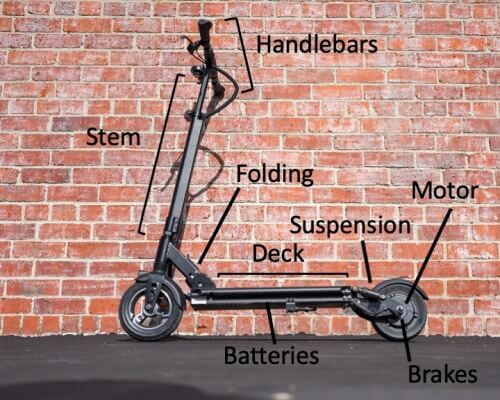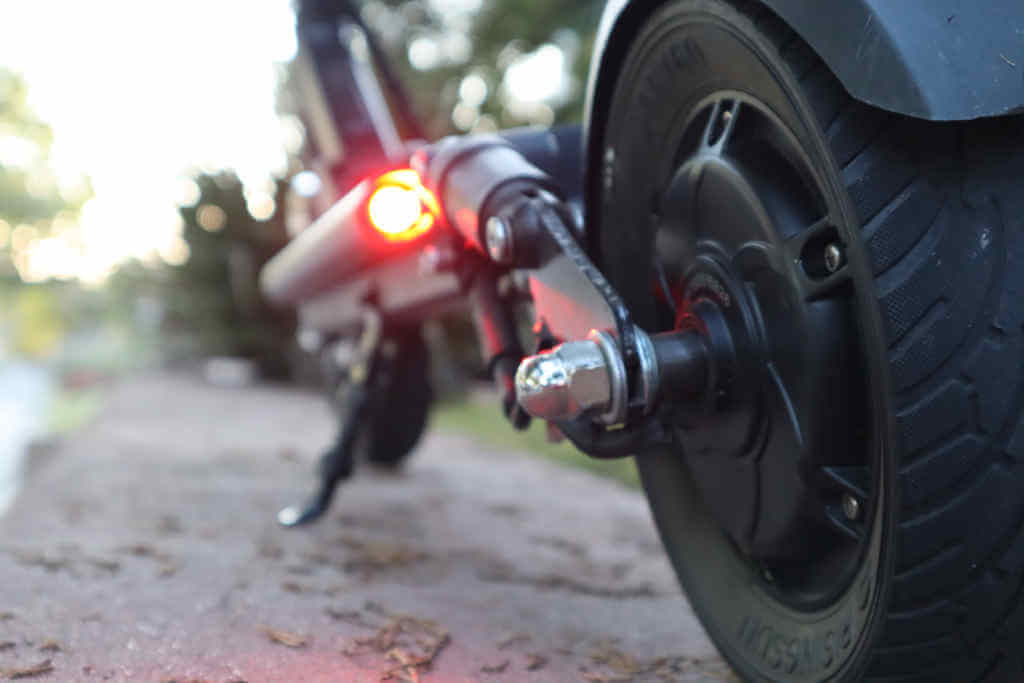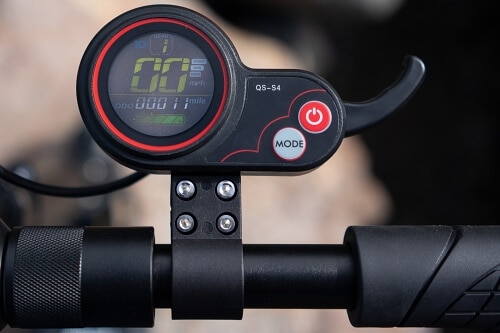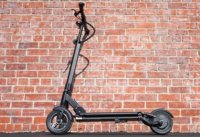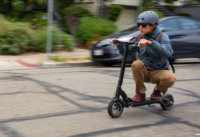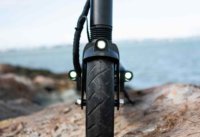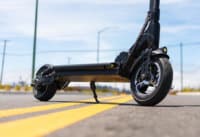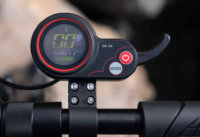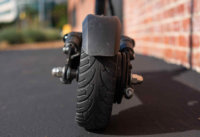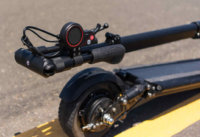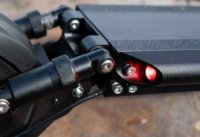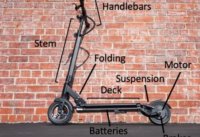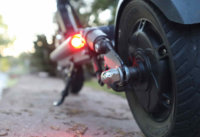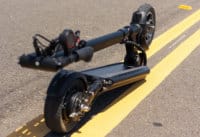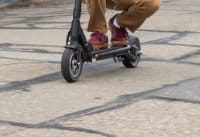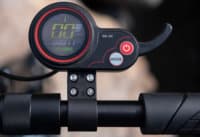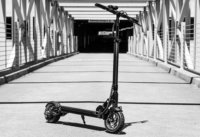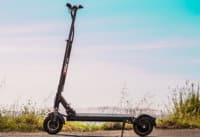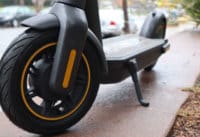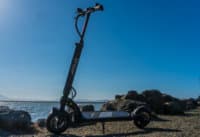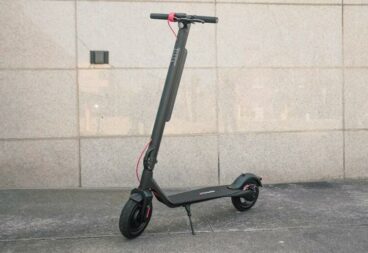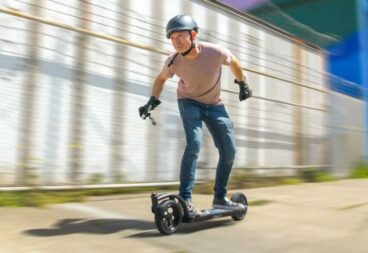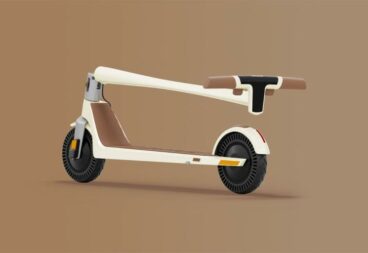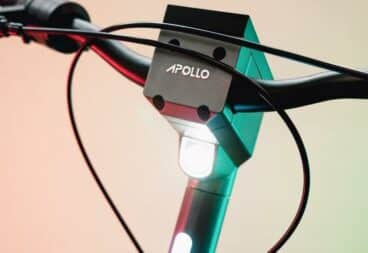Fluid Freeride Horizon (13 Ah)
$849
This Fluid FreeRide Horizon review dives deep into the performance, build quality and features of the Horizon. The Horizon is a step above entry-level scooters like the M365. It has more range and power, and a dual suspension — adept for daily commuting.
Technical Specifications
| Tested top speed: 24.0 mph* | |
| Tested range: 26.0 mi* | |
| Weight: 39 lb* | |
| Max rider weight: 260 lb | |
| Water resistance: None |
Highlights
| Excellent 26 mi range | |
| Folds into a very compact package | |
| Good hill climbing ability | |
| Weight means it's not super portable | |
| Solid rear tire doesn't maintain great traction |
Our content is independent, but buying through our links may earn us a commission.
Summary
Subscribe to our channel for more great videos.
Our Take: Upgrade from Entry-Level in Every Way
The Fluid FreeRide Horizon, with a powerful 500-watt motor and deep capacity 624 watt hour battery, is a longer-ranged, heavier, more powerful step up from entry-level e-scooters like the Gotrax GXL V2 or Xiaomi Mi M365.
The Horizon is designed for buyers who are looking to step up from the M365 or another entry-level scooter. These riders have longer commutes and need a scooter with a small, portable form factor. Due to their long commute, they will tend to encounter poor terrain that necessitates good ride quality.
The Horizon, while still keeping its price below $1,000, addresses these needs and is a very functional commuter.
Best Alternatives and Competitors
| Model | Top Speed** | Range** | Weight** | Price |
| Fluid Freeride Horizon (13 Ah) | 24.0 mph | 26.0 mi | 39 lb | $849 |
| EMOVE Touring | 21.5 mph | 18.7 mi | 40 lb | $899 |
| Segway Ninebot Max | 18.4 mph | 21.6 mi | 43 lb | $899 |
| Apollo City | 28.6 mph | 17.9 mi | 43 lb | $949 |
Fluid Freeride Horizon Review
Performance Summary
| Acceleration (0 to 15 mph) | 4.7 seconds |
| Acceleration (0 to 20 mph) | 7.8 seconds |
| Top speed | 24.0 mph |
| Braking distance (15 to 0 mph) | 23.0 feet |
| Range | 26.0 miles |
| Hill climb | 15.1 seconds |
Acceleration
Our Horizon review found that acceleration is a little laggy initially, up to about 8 mph. However, after gentle initial acceleration, you hit the sweet spot of the acceleration curve — the Horizon wakes up and starts pulling hard all the way up to 15 mph. At >15 mph, acceleration slowly rolls off until you hit the top speed of 24.0 mph.
The motor, which is unsuspecting initially, also wakes up, and strong acceleration is accompanied by pleasant increased motor whirring sounds.
The Horizon went from 0 to 15 mph in 4.7 seconds, and reached 20 mph in 7.8 seconds, during our acceleration tests.
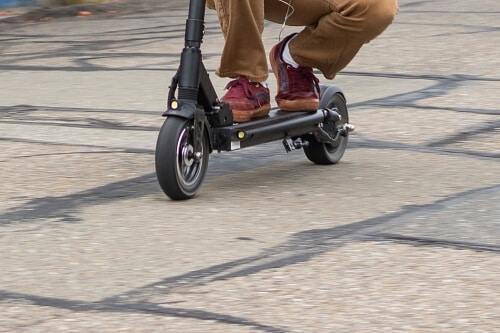
Overall, acceleration to 15 mph is a bit faster than the budget Xiaomi M365, which takes 6.3 seconds. However, the Xiaomi and some other budget scooters may actually beat the Horizon off the line due to less acceleration lag.
Hill Climb
The Horizon performs well, even on steep hills. On an average hill of a few % grade, the Horizon is able to fly up at only a few mph below its maximum speed. In a city like San Franciso, it may come to a crawl on the steepest hills, but most should be surmountable.
The Horizon completed our standardized hill climb test in 15.1 seconds at an average speed of 8.9 mph We test all scooters on the same 200 ft, 10% grade hill, with a 165 lb rider.
For comparison, a typical 250-watt electric scooter will take around 20 seconds. The budget-priced M365 took 21.2 seconds; the more powerful (and pricier) EMOVE Cruiser took 12.0 seconds.
Top Speed
When fully charged, the Horizon will hit 22 mph on the flat and 24.0 mph when going slightly downhill (165 lb rider). Speed is not electronically governed, but limited by motor power output.
Range
The Horizon had a range of 26.0 miles on our real-world range test. We test all scooters on a standardized urban loop with stops/starts, hills, and rough roads with the same 165 lb rider. Scooters are ridden at the fastest speed that is safe and in their fastest (least energy-conserving) mode.
Braking
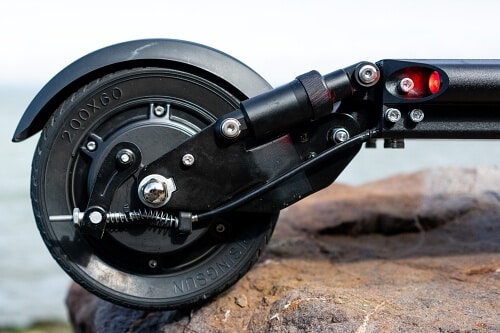
The Horizon has a rear drum and rear electronic brake controlled by a single lever.
During our braking tests, we were able to bring the scooter from 15 mph to 0 mph in 23.0 feet. Because just a single wheel is braking, it is on the longer side of the typical 15 ft to 25 ft of braking distance we usually see.
The rear drum brake, which has the benefit of being fully encased within the wheel, is virtually maintenance-free and should be very robust. Out-of-the-box, the brakes were dialed-in and quiet. There is minimal travel in the brake lever, meaning you don’t have to pull it much before it activates. Finally, braking action is smooth, and minimal force is required for maximum braking.
The only downside to the braking system as a whole is that all braking action is coming from the rear airless tire. The tire doesn’t have quite as much grip as a pneumatic one. If you lock it out, the rear tire will slide around.
Overall, performance for the braking system as a whole is still acceptable, though we’d like to see braking on both wheels.
Ride Quality
The weight balance on the scooter is more centered towards the rear where the motor and drum brake are located.
Even after completing the range test, which consisted of 26.0 miles of starts/stops and riding over rough roads, we could still feel our feet and our joints weren’t hurting. This is a sign that the suspension is doing its job.
The Horizon has a front and rear spring suspensions.
The front spring suspension and 8.5-inch pneumatic tire help to soften the impact from rough terrain. They also reduce the amount of force needed to roll over obstacles that might otherwise result in face planting into the ground.
The rear spring suspension is less critical for rolling over obstacles and mostly contributes to overall ride quality. It ensures you don’t get a brain massage when riding on really rough roads.
Finally, the Horizon suspension is reasonably quiet — unlike the dreaded clanking suspension on the Ninebot ES2. It yields ride quality that is as good or slightly better than scooters with large diameter pneumatic tires.
Fluid FreeRide Horizon Features
Portability
Overall, the Horizon is on the heavier side of portable but folds into one of the most compact sizes of 38-inches by 7-inches by 14-inches. This allows it to be stowed on public transportation or at a coffee shop. It is near as compact as the ultra-portable Booster V (37-inches by 5-inches by 12-inches).
The Horizon weighs 42 lbs and falls below the limit of 45 lbs that we consider the threshold for portability. However, the hand-friendly stem size and weight balance make the scooter feel lighter.
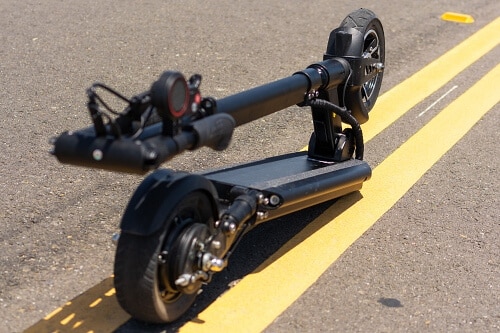
To fold into a compact package, the Horizon features:
- Folding handlebars
- Folding stem
- Telescoping stem
Folding handlebars mechanism
The Horizon has a simple handlebar folding mechanism. To unfold, you simply pull the handlebars upwards, then tighten a screw mechanism to lock them into place. This will prevent them from collapsing mid-ride.
During our test ride, we noticed that the handlebar screwing mechanisms had a tendency to loosen. It required periodic re-tightening. This was not a safety issue but was a minor annoyance.
Stem folding mechanism
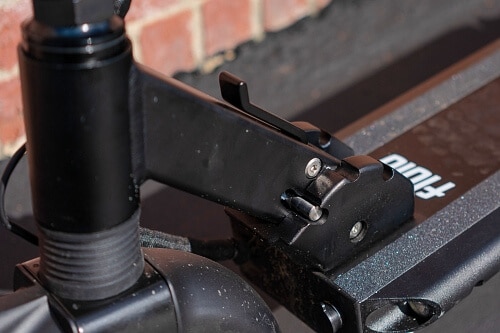
Folding the Horizon is very easy — you simply pull on a metal lever near the base of the deck and the scooter folds. The scooter locks in the folded position for easy carrying. The mechanism gives an audible click when the stem is locked into place.
Brake levers
The Horizon has a single, high-quality brake lever mounted on the left side of the handlebars. The brake lever activates both the electronic brake and rear drum brake.
Pulling action on the brake is smooth and requires minimal force. Pulling down just slightly on the lever will activate the electronic brake, which provides modest braking. Pulling a bit further takes the small amount of slack in the mechanical cable and begins to activate the rear drum brake.
Overall, the brake lever gives good control over the brakes and allows sudden, rapid and controlled stopping, if necessary.
Cockpit
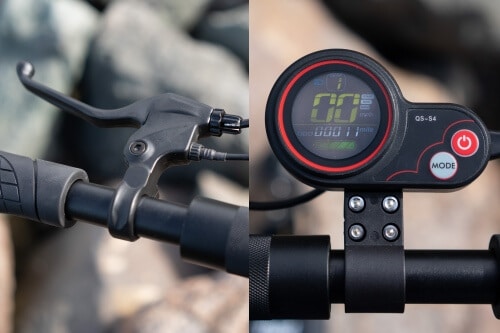
The Horizon has quality, ergonomic, rubberized grips that are well-secured to the handlebars. They stayed in place and didn’t twist or turn while riding.
The accelerator is a QS-S4 trigger throttle with a built-in LCD display. This part is ubiquitous among electric scooters. Though the trigger doesn’t take much effort to pull down, having your finger outstretched for prolonged periods can be uncomfortable.
The LCD display shows mode, speed, odometer, and battery level. You can also use it to tune some of the many P-settings that control different features. The LCD display, with the exception of the battery level, is easy to read (even in bright sunlight).
Lights
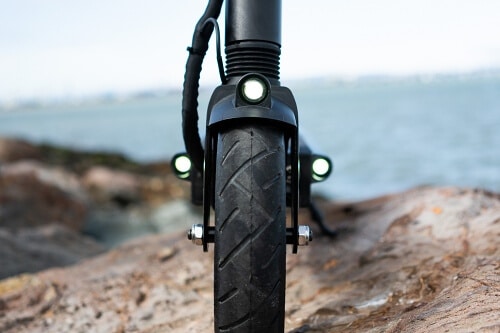
The Fluid FreeRide Horizon features both front and rear lights. The scooter does not have any auxiliary lighting or turn signals.
The Horizon’s lights are helpful if you end up riding in the dark. As part of our review process, we tested the scooter at night. However, we don’t think they are sufficient for if you plan on riding in poor lighting regularly.
Besides the low mounted, small front light, there are button lights on both sides of the deck in the front and rear. The rear lights blink when the brake is activated.
Read our complete guide to riding an electric scooter at night.
Tires
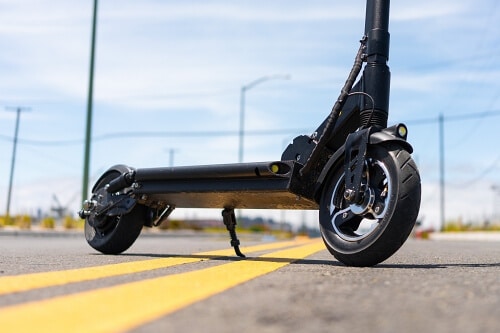
No Horizon scooter review would be complete without geeking out about tires a little.
The Horizon features a front 8.5-inch pneumatic tire and an 8-inch rear airless tire.
The front pneumatic inner tube tire provides good traction. Combined with the front suspension, it works well for rolling over most obstacles and bumps you’ll encounter in an urban setting.
The rear tire is airless and doesn’t provide as good of traction as the front one. It will perform worse in wet conditions. The main benefit of the airless rear tires is zero maintenance and risk of flats.
Learn more: technical guide to electric scooter tires.
Deck
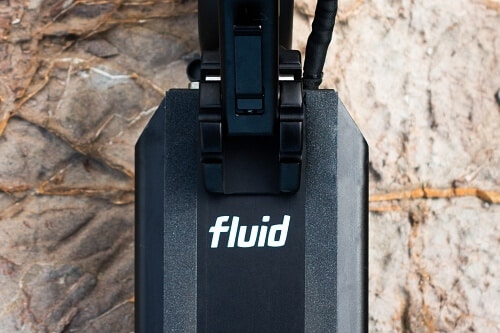
Considering how compactly the Horizon folds, it has a spacious deck with 18.2-inches by 6.2-inches of standing space. This is actually an inch longer than the 56 lb Skywalker 10S, but shorter than the roomy Zero 9 (20.5-inches by 20.5-inches).
The Horizon also has 4.2-inches of ground clearance, which is enough to drop off most curbs without any problems. If you roll through a puddle, it also helps to keep the water off you.
The deck is finished with the Fluid logo and is textured with grip tape to help keep you planted on the scooter.
Attached to the deck is a kickstand. The kickstand is a little too short and causes the scooter to lean over a bit too far.
Build Quality
Overall, the Horizon has good build quality, but not the same level of finish we see on more mass-manufactured scooters like the M365.
Cabling and wiring originating from the handlebars and descending into the various parts of the scooter are all nicely buttoned up in a protective sheath and routed through a separate tube attached to the main stem. This gives the scooter a clean look and should increase durability.
One gripe we have with the design is the charging port. The port is placed on the front of the scooter deck and requires the wheel to be turned when plugged in. If you accidentally turn the wheel while charging, you could potentially shear the plug off or damage the charging port.
While the Horizon is by no means a tank, it is well constructed. Most of the scooter is built from quality metal parts and assembled together with hefty bolts.
When fully unfolded, the scooter has no noticeably creaking that would suggest poor quality. However, there is play in the folding handlebars and stem if you push or pull hard on them. Though we don’t love this, even the sturdiest of scooters tend to exhibit some of this.
The Horizon we tested had one screwing mechanism on the folding handlebar that tended to back out every few miles, which was a bit annoying but not a significant quality/safety issue.
Horizon Electric Scooter: Review Conclusions
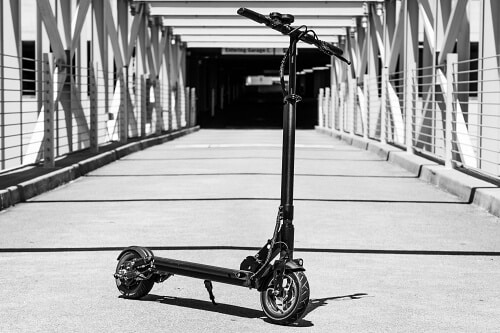
Despite a few minor gripes regarding the charging port placement, throttle lag, and loosening handlebar threads, the Horizon is a great scooter at a competitive price point.
The Horizon, compared to a quality entry-level 250-watt scooter like the M365 or GXL V2, answers the need for:
- Longer range
- Better hill climbing
- Higher top speed
- Greater compactness
The trade-off is its 42 lb weight — roughly 16 lbs heavier than a typical 250-watt scooter.
Our content is independent, but buying through our links may earn us a commission.
If the Horizon isn’t appealing to you, see our suggested alternatives. You can also check out our Editor’s pick of best electric scooters.
Fluid FreeRide Horizon Specifications
| Make | Fluid Freeride |
| Model | Horizon (13 Ah) |
| Weight | 42 lb |
| Folded dimensions | 38 by 7 by 14 in |
| Motor power, continuous | 500 W |
| Top speed | 25 mph |
| Range | 30 mi |
| Battery capacity | 624 Wh |
| Battery recharge time | 5 to 7 hrs |
| Max rider weight | 260 lb |
| Brake type | None + Drum |
| Tire type | 8.5 in Pneumatic (Inner Tube) + Solid |
| Built-in lights | Front + Rear |
| Water resistance | None |
